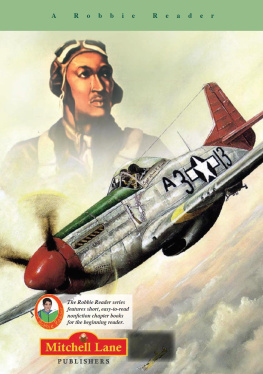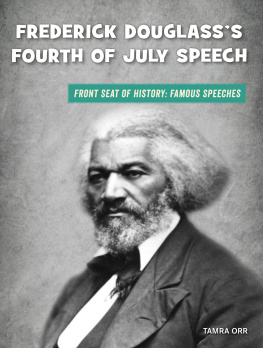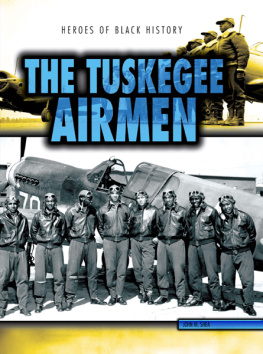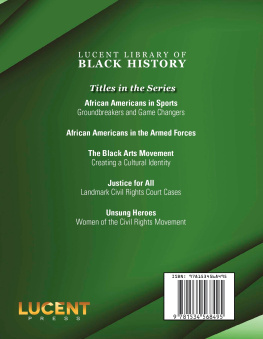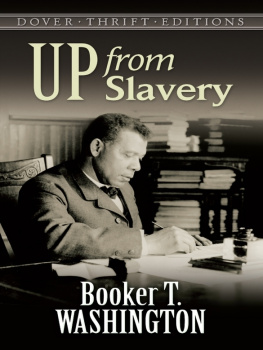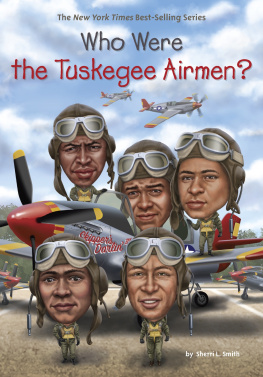


Copyright 2010 by Mitchell Lane Publishers. All rights reserved. No part of this book may be reproduced without written permission from the publisher. Printed and bound in the United States of America.
Printing 1 2 3 4 5 6 7 8 9
A Robbie Reader/Whats So Great About... ?
Amelia Earhart
Barack Obama
Daniel Boone
Elizabeth Blackwell
Galileo
Helen Keller
Johnny Appleseed
Martin Luther King Jr.
Pocahontas
Sam Houston
Anne Frank
The Buffalo Soldiers
Davy Crockett
Ferdinand Magellan
George Washington Carver
Henry Hudson
King Tut
Michelle Obama
Robert Fulton
The Tuskegee Airmen
Annie Oakley
Christopher Columbus
The Dormer Party
Francis Scott Key
Harriet Tubman
Jacques Cartier
Lewis and Clark
Paul Bunyan
Rosa Parks
Library of Congress Cataloging-in-Publication Data
Orr, Tamra.
Whats so great about the Tuskegee Airmen / by Tamra Orr.
p. cm. (A Robbie reader) (Whats so great about ?)
Includes bibliographical references and index.
ISBN 978-1-58415-832-5 (library bound)
eISBN 978-1-54575-044-5
1. World War, 1939-1945 Participation, African AmericanJuvenile literature. 2. United States. Army Air Forces. Fighter Squadron, 99th History Juvenile literature. 3. African American air pilots History Juvenile literature. 4. World War, 19391945 Aerial operations, American Juvenile literature. 5. Tuskegee Army Air Field (Ala.) Juvenile literature. 6. World War, 19391945 Campaigns Western FrontJuvenile literature. 7. World War, 19391945 Regimental histories United StatesJuvenile literature. I. Title.
D810.N4O75 2010
940.54'4973 dc22
2009027360
ABOUT THE AUTHOR: Tamra Orr has written nearly 200 nonfiction books for readers of all ages, including Whats So Great About the Buffalo Soldiers? for Mitchell Lane Publishers. She graduated from Ball State University in Indiana with a degree in English and Secondary Education. Now she lives in the Pacific Northwest with her four kids, husband, dog, and cat.
PUBLISHERS NOTE: The following story has been thoroughly researched and to the best of our knowledge represents a true story. Documentation of such research is on page 29. While every possible effort has been made to ensure accuracy, the publisher will not assume liability for damages caused by inaccuracies in the data, and makes no warranty on the accuracy of the information contained herein.
PLB
TABLE OF CONTENTS
Chapter One
A Special Passenger
Chapter Two
They Wanted to Fly
Chapter Three
The Tuskegee Experiment
Chapter Four
Meet the Red Tails
Chapter Five
Of Civil Rights and Presidents
Words in bold type can be found in the glossary.

A delighted Eleanor Roosevelt enjoys her ride through the sky with pilot Charles Alfred Anderson, who taught himself to fly at the age of twenty-two. He had become well known for his goodwill flights to Cuba, Jamaica, Haiti, and six other countries before joining Tuskegee University as Chief Flight Instructor.

CHAPTER ONE
A Special Passenger
The Presidents Secret Service men were not happy. Eleanor Roosevelt, the Presidents wife, was being difficult.
It had not started out that way, of course. Mrs. Roosevelt had stopped by Alabamas Tuskegee (tuh-SKEE-gee) University for a quick visit. No one knew that she would change history while she was there.
It was March 29, 1941. The United States was already involved in what would one day be called World War II. The First Lady had stopped to meet the schools black students. She also wanted to ask them what was on many peoples minds. Could black people really be pilots? There was no question the armed services needed all the pilots they could get in the coming battles. However, a number of people did not believe that blacks were smart enough or brave enough to fly airplanes.
Finally, Mrs. Roosevelt turned to Charles Alfred Chief Anderson, the head of Tuskegee Universitys aviation (ay-vee-AY-shun) program. Was it truly possible for blacks to fly? He replied, Certainly we can! To prove his point, he invited her to take a ride with him. She said yes. When she climbed in the back of his Piper Cub plane, her Secret Service men were not happy. They quickly called the President.

The Piper Cub plane dates to 1927 when two brothers wanted a lightweight plane for barnstorming. Years later, the company was purchased by William Piper. Soon the aircraft became the primary aircraft of the Civilian Pilot Training program.

Tuskegee University was the first black college to be named both a National Historic Landmark and a National Historic Site. Besides being famous for training airmen, the university is where George Washington Carver conducted his revolutionary peanut experiments.
Well, if she wants to do it, theres nothing we can do to stop her, he said.
For the next 40 minutes, Mrs. Roosevelt flew with Anderson. When they landed, she was smiling. She had her picture taken with the chief. Then she went home to the White House. She wanted to talk to her husband.
Soon the decision to teach the first group of black men how to fly was announced. The hundreds of pilots who became the Tuskegee Airmen had a First Lady to thank. Her short flight led to victories in warand jump-started the civil rights movement in the United States.

This World War II poster for the U.S. Air Force attracted many young Americans who wanted to defend their country from above the clouds. That wish to fight was felt by many, no matter their race or gender.

CHAPTER TWO
They Wanted to Fly
As the 1930s ended, the people of the United States were worried. Times were hard. For ten years, people had struggled to stay alive. Thousands had lost their jobs, and families stood in line for food. Then it became clear that a war being fought in other countries was about to include the United States. Germanys leader, Adolf Hitler, was taking control of many European countries. The United States, along with allies France, Great Britain, and Russia, prepared to fight back.
Battles were fought on the ground and in the sky. Pilots who could fly swiftly, aim carefully, and escape completely were in high demand. All white men who wanted to be pilots were asked to join the armed services. In 1939, Congress passed the Civilian Pilot Training Act. It provided funds to colleges across the country for training thousands of students to be military pilots. Blacks, however, were not invited.
Next page
